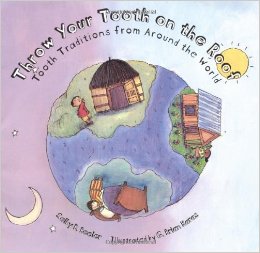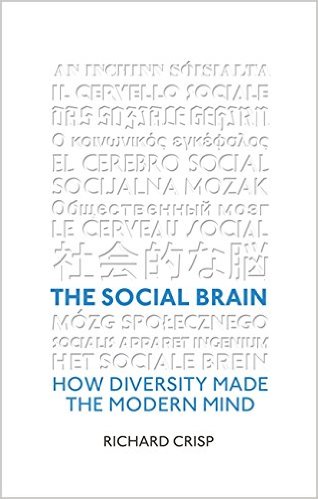
My gorgeous grandson has just lost his first tooth, an event much anticipated and causing a great deal of excitement. In the months leading up to the event I had wondered how the family might mark the occasion and if the Tooth Fairy might visit. Though I shared the myths of Santa Claus, the Easter Bunny and the Tooth Fairy with my children when young, as adults they have debated the ethics of perpetuating these myths with their own.
As a teacher of 5 – 7 year olds it was not uncommon for me to encounter gappy grins and lost teeth through the course of the year. Mostly children would arrive at school proudly displaying a new gap, or a new tooth peeking through. Sometimes the tooth would dislodge at school and there would be great excitement. I would carefully place the tooth in the centre of a tissue, fold the edges down around it and sticky tape below the tooth to make a little “tooth fairy” to keep the tooth safe for the return home.

Sometimes the children would discuss how their families marked the occasion of a lost tooth. Although there were children from diverse backgrounds in the classes I taught, I don’t remember any great divergence from the, to me, traditional tooth fairy story.
When I was a child, I put my tooth in a glass of water and placed it on the kitchen windowsill. The following morning, if I was lucky (for sometimes she’d forget), the Tooth Fairy would have been and left me a shiny silver threepence.
Some children I taught put their teeth under their pillows, some in a special box by their bedside, but what most had in common was the fact that the tooth had been taken and replaced with a shiny coin. Sometimes, when a child lost a tooth, we would read a story such as What do the fairies do with all those teeth? or Moose’s Loose Tooth.

While I was contemplating what the response might be to my grandson’s lost tooth, I read about a book called Throw Your Tooth on the Roof: Tooth Traditions from Around the World by Selby Beeler with illustrations by G. Brian Karas.

I wondered if it would be a suitable gift to mark the occasion and went ahead and ordered it. I wasn’t disappointed. The book briefly describes traditions from many cultures and countries around the world. While the Tooth Fairy’s visit and gift of a coin is familiar to those of us living in the UK, US, Canada and Australia, it is not so familiar to all. In Mexico and Venezuela a mouse replaces the tooth with money. In El Salvador a rabbit does the same. In Guatemala it is El Ratόn.
The title of the book comes from the tooth traditions of Botswana and the Dominican Republic. In some countries children receive coins, as described above, or a gift in exchange for the tooth. In other countries they ask for a new tooth. In Costa Rica and Chile the tooth is made into an item of jewellery. What surprised me was the great variety of traditions, of which I have mentioned only a few.
In her Author’s Note at the end of the book Selby Beeler explains the chance discussion, with a friend from Brazil who hadn’t heard of the Tooth Fairly, that piqued her interest and lead to the writing of the book. She says,
“I quickly discovered that the best way to learn what people do with their baby teeth is simply to ask them. While collecting customs for this book I stopped people wherever I went. I smiled, introduced myself, and asked them the question I had asked my friend, ‘What did you do with your baby teeth when you lost them?’”
The result is fascinating. Thank you Selby for being curious and asking a question that elicited so many interesting responses. Thank you also for selecting some of the hundreds of traditions and compiling them into this lovely book that enables us to find out a little more about each other; some things that are the same and some that are different. I’d be delighted too if you, esteemed readers, shared your traditions in the comments.
In the introduction to the book Beeler says,
“Has this ever happened to you?
You find a loose tooth in your mouth.
It happens to everyone, everywhere, all over the world.”
I am disappointed that, in all the years I was teaching children in the “loose tooth” age group I hadn’t ever thought to investigate different traditions. Although I took many opportunities to celebrate the diversity in the classroom (I’ve shared some of those here), I wonder what other opportunities I missed. If I was still working with year one children this book would be essential to my collection and sit alongside another favourite for discussing diversity and acceptance, Whoever You Are by Mem Fox. I am pleased I found it in time to gift to my grandson to mark his first missing tooth.

This week at the Carrot Ranch Charli Mills is also talking about diversity and has challenged writers to In 99 words (no more, no less) write a story of a character who is diverse. Who is this person? Does this character know, accept or reject being perceived as different? As writers, consider how we break stereotypes. Tell you own story of “otherness” if you feel compelled. Or, select a story of diversity, such as rainbows revealing gold. How is diversity needed? How is your character needed?
Coincidentally I am reading a book about diversity at the moment. The book, The Social Brain: How Diversity Made the Modern Mind by Richard Crisp was reviewed by Anne Goodwin who blogs at Annecdotal. In her review Anne says,
“I’m pleased to say that Richard Crisp’s highly accessible overview of recent research into cultural diversity has not only revitalised my interest in social psychology but is highly relevant to how we all live today. I touched on one of his papers in my recent post on Looking at difference, embracing diversity. The Social Brain develops those ideas in more depth and detail.”

I am compelled to add my voice to Anne’s recommendation. It is a fascinating, challenging and enlightening read.
In a comment on her post, Charli stated that diversity is in the small things, not just the big. I believe she is right. It is the attitudes and actions we incorporate into our everyday lives that can make the big difference in another’s world. I’m sticking to my tooth theme for my flash with a wish for recognition of commonality, acceptance and respect. Richard Crisp’s book goes a long way towards helping understand what drives us, and why.
A friendship born
The invisible wall was a fortress built of fear and prejudice. On either side a child played alone. The rules were accepted without question.
Then they saw each other, and a challenge was born.
At first they kept their distance, staring across the divide, until scolding adults bustled them away.
Curiosity and loneliness won over fear as they mirrored each other in play.
One day they drew close enough to touch, but hesitated. Simultaneously they bared their teeth, each proudly displaying a gap, in the middle on the bottom, a first. Surprised, they laughed together: more same than different.

Thank you for reading. I appreciate your feedback. Please share your thoughts about any aspect of this post or flash fiction.








